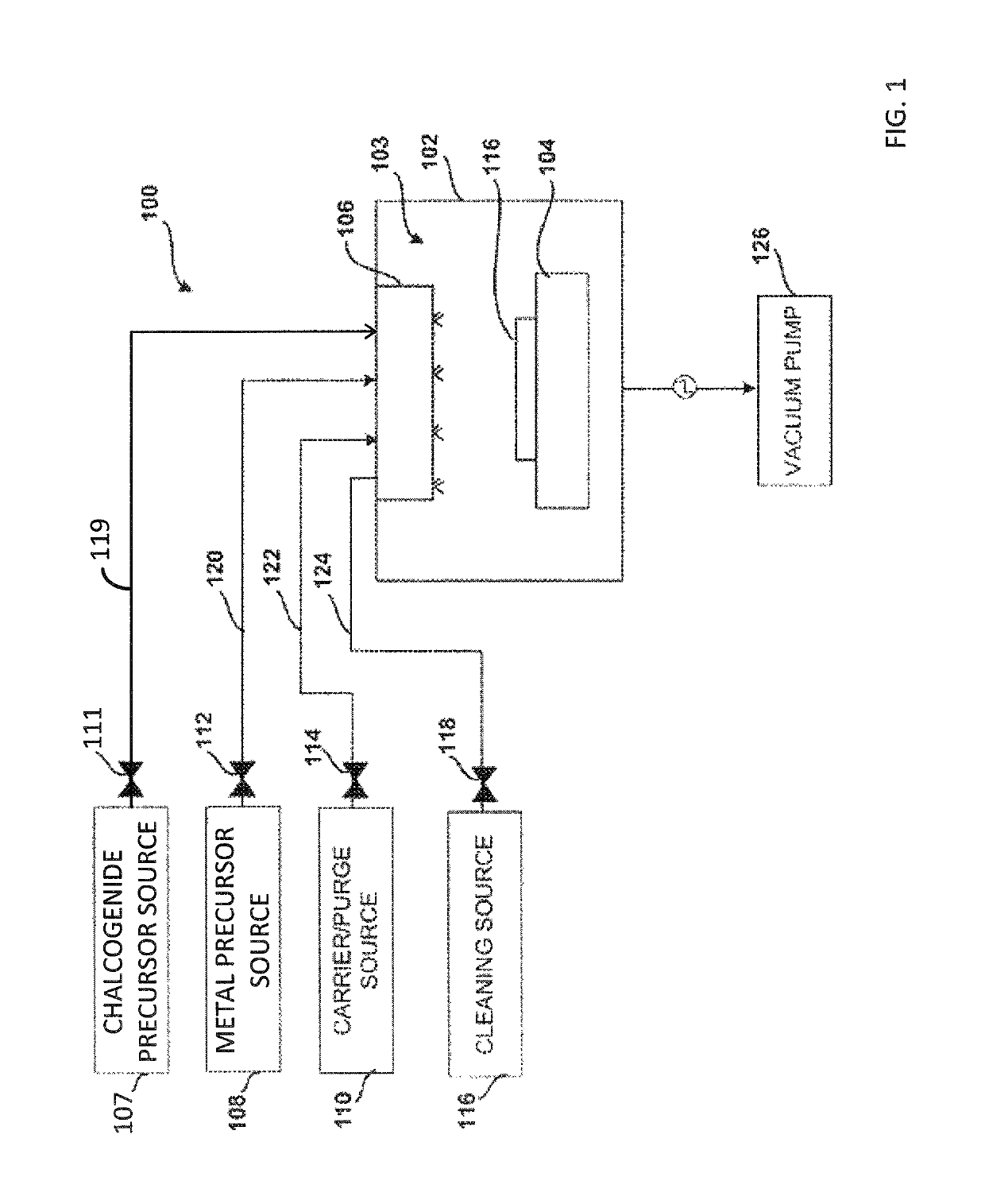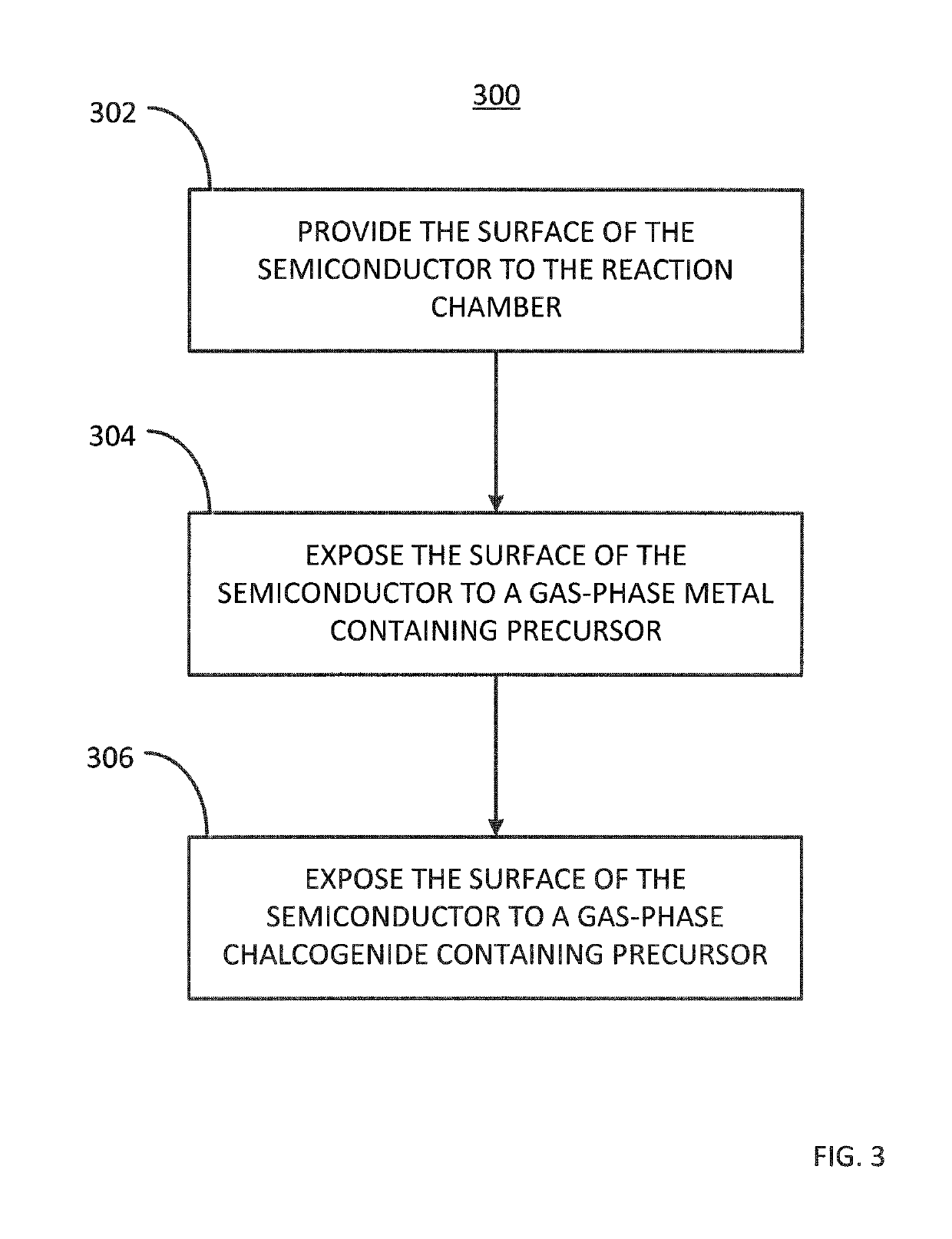Method for passivating a surface of a semiconductor and related systems
a technology of semiconductor and surface, applied in the direction of chemical vapor deposition coating, coating, basic electric elements, etc., can solve the problems of unfavorable device performance, unfavorable device performance, and difficulty in integration of immersion based passivation process into vacuum or gas-phase deposition system used for subsequent dielectric material deposition
- Summary
- Abstract
- Description
- Claims
- Application Information
AI Technical Summary
Benefits of technology
Problems solved by technology
Method used
Image
Examples
Embodiment Construction
[0017]Although certain embodiments and examples are disclosed below, it will be understood by those in the art that the invention extends beyond the specifically disclosed embodiments and / or uses of the invention and obvious modifications and equivalents thereof. Thus, it is intended that the scope of the invention disclosed should not be limited by the particular disclosed embodiments described below.
[0018]As used herein, the term “surface” may refer to any portion of an exposed semiconductor surface. For example, the surface may be the entire exterior of a semiconductor substrate and / or layer or a portion thereof or a top surface of a semiconductor substrate and / or layer thereon or a portion of either.
[0019]As used herein, the term “chalcogenide containing precursor” may refer to a precursor containing a chalcogen and a more electropositive element or radical. A chalcogen is an element from the group VI of the periodic table including oxygen, sulphur, selenium, tellurium and polon...
PUM
| Property | Measurement | Unit |
|---|---|---|
| temperatures | aaaaa | aaaaa |
| temperature | aaaaa | aaaaa |
| temperature | aaaaa | aaaaa |
Abstract
Description
Claims
Application Information
 Login to View More
Login to View More - R&D
- Intellectual Property
- Life Sciences
- Materials
- Tech Scout
- Unparalleled Data Quality
- Higher Quality Content
- 60% Fewer Hallucinations
Browse by: Latest US Patents, China's latest patents, Technical Efficacy Thesaurus, Application Domain, Technology Topic, Popular Technical Reports.
© 2025 PatSnap. All rights reserved.Legal|Privacy policy|Modern Slavery Act Transparency Statement|Sitemap|About US| Contact US: help@patsnap.com



